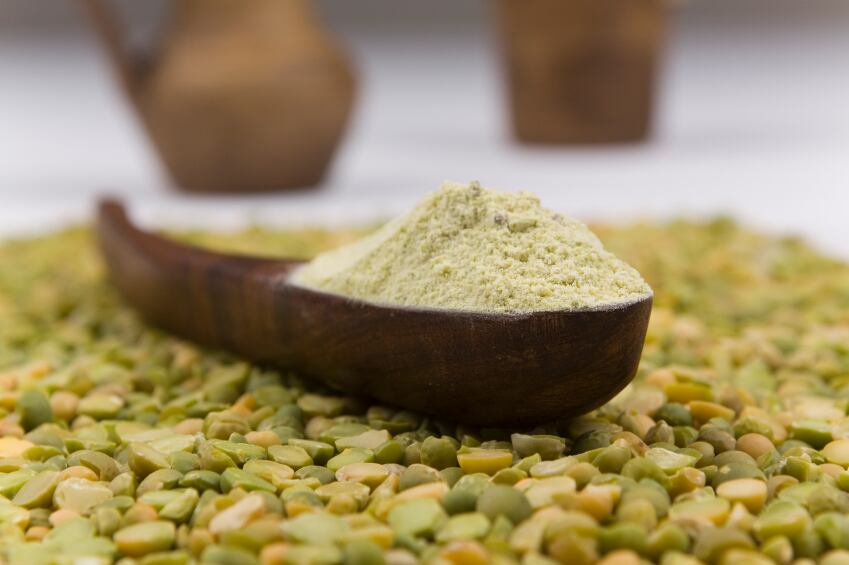Plant-based proteins are enjoying a boom and manufacturers are on the hunt to find new sources for their products.
While pea proteins are popular – they have the advantage of being allergen free for those with soy allergies, for instance – they have a bitter aftertaste and flavor off-notes that need to be removed or masked.
“However, such prior attempts, while providing some reduction in pea flavors and bitterness, have not been able to reduce these undesired characteristics to levels needed for broad consumer acceptance of pea flours in common foods and beverages,” writes Kellogg in its international patent.
According to the multinational food manufacturer, its patented method of steam-cooking and drum-drying pea protein flour, concentrates and isolates can reduce bitterness and off-notes so they can be used like conventional or soy-based flour “with little to no detectable pea flavor or bitterness in the final product”.
“It has been long believed that low molecular weight, volatile components are responsible for the bitter and characteristic flavors of leguminous flours.
Pea flours generally have 20 to about 30% protein, pea protein concentrates may include protein in amounts up to about 60% while isolates may contain up to 90% protein.
“[We have] surprisingly found that the bitterness and characteristic flavors of pea compositions, for instance, can be improved further by decreasing amounts of certain non-volatile and high molecular weight components in the leguminous materials such as pea compositions.”
Non-volatile flavor components are flavor molecules that cannot be removed by methods such as evaporation.
The scientists say they have discovered that proteins associated with bound saponin compounds that have a molecular mass of greater than about 25 kDa may be responsible for much of the bitterness and characteristic flavors in the pea flours.
Reducing bound saponins
“Removing or at least decreasing the amounts of these protein components and/or the associated bound saponin compounds from the pea compositions results in a processed pea composition with substantial reduced bitterness and characteristic pea flavors even if the saponin (and any associated proteins) remain as free and unbound in the processed pea composition,” they write.
While manufacturers have attempted to reduce the bitterness and off-notes of pulses in the past using rotary cooking at different pressures, dry roasting flour and static drying, none of the methods were satisfactory, writes Kellogg.
“Without wishing to be limited by speculation, it is possible that such prior methods failed to reduce the level of bound saponins in the pea compositions as discovered by the methods and compositions herein."
Pea flours and other pea compositions are known to contain saponin compounds and may have a content of between 0.7 and 1.5 g/kg total saponin content (i.e., about 700 to about 1500 ppm).
The Kellogg researchers made a baked product using the deflavored pea protein along with sugar, spices, oil and other ingredients such as baking soda, acacia gum and tocopherols.
Five sensory panelists then tried the product and rated it for bitterness, with the steam cooked and drum dried pea protein performing best.
The resulting pea protein product could be used in a variety of food and drink products, said Kellogg.
Source: WIPO International Patent No. 20190000120
“Processed Leguminous Materials”
Published online January 3, 2019
Applicant: Kellogg Company
Inventors: Monjur Hossen, John David Pinkston, Alina Ruxandra Tenea, George Cherian


